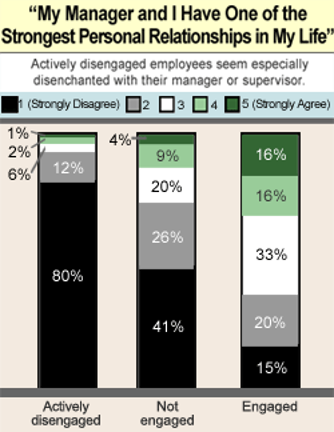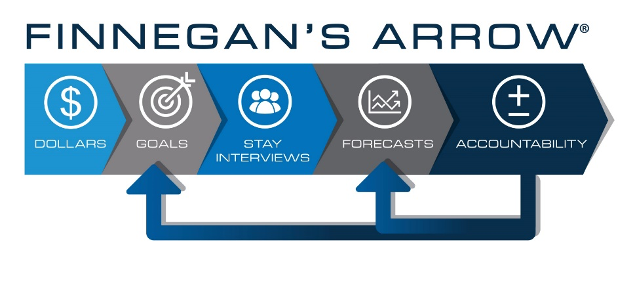Most hiring tools answer whether candidates can and will do the job, but not if they’ll stay. Learn how realistic job previews and motivational-fit interviews can improve retention from day one.
Fool-Proof Methods To Improve Employee Engagement Every Time – Guaranteed!

Last week’s blog contained the most interesting employee engagement data I’ve ever seen, that U.S. engagement roller-coastered to its highest-point ever and then immediately tumbled to its greatest decline…all within a matter of weeks. Gallup’s explanation was 100%-focused on the events of our wacky 2020 times…our pandemic, social unrest, and more.
If you didn’t see that report or need a refresher, you can see it here: https://c-suiteanalytics.com/engagement-plunged-in-one-month/
I said then I would next tell you how to improve employee engagement, despite Gallup’s ongoing reporting that engagement prior to 2020 has stayed essentially the same, that just about one-third of our U.S. employees are engaged. Let’s start with why most engagement strategies fail:
- Surveys provide data but not solutions, and few organizations get the solutions right.
- By way of their required anonymity, surveys give broad trends vs individual employee responses meaning the inputs of your best performers and those you will terminate tomorrow gain equal weight.
- Most surveys provide external benchmarks which are momentum killers because most organizations are happy to be in the middle of the pack.
To be clear, these three reasons happen in all corners of our globe. We have worked in China, Thailand, Malaysia, Africa, Europe, and South America….plus of course in the U.S. and Canada. Everywhere we go, these three circumstances are live in local organizations.
As you consider the three points above, consider also that top-performers generate as much productivity as four workers which we’ve proven here before, so it is essential that you know what each of them thinks about their work circumstance, individually. That previous report is here: https://c-suiteanalytics.com/how-to-keep-top-performers-from-quitting/
And benchmarks which are so valuable in other areas of organizations are downers here because the easy cop-out is to say if other companies can’t fix this, we can’t fix it either. For most executives and many HR professionals, their reaction to their “average” engagement score compared to benchmarks is the same as their reaction to rush-hour traffic, something we cannot change and therefore we must work around. “The benchmark proves we can’t do better.”
Let’s pause here for a moment. Can you imagine your CEO thinking it is OK to be average in sales or service? Thinking that if competitors can’t do these things better then we can’t do them better either? This tells you the true state of engagement today, and why it hasn’t changed in twenty years.
How, then, should you actually raise your engagement scores?
First, educate your top team that engagement is more than a score. Six years ago, I published a paper on employee engagement’s correlations to productivity and profitability and you can see that paper here: https://c-suiteanalytics.com/wp-content/uploads/2015/12/C-Suite-Analytics-White-Paper-Employee-Engagement-Correlates-with-Profitability-SHRM-2014.pdf
As just one tease, Northwestern University professors found that salespeople who gave just 10% more effort increased their sales by nearly 23%. Wouldn’t that make your sales department’s engagement score more important?
Data like this makes chief financial officers drool…well, sort of…and the time has come for CFOs to see employee retention and engagement as areas of both high cost and high opportunity for increased revenue. If your management meetings include CFOs reporting on essential operations performance against metrics while HR reports on engagement and retention, ask your CFO to report all of the data including for engagement and retention. Otherwise engagement and retention are seen as second-class metrics, less important than the operations metrics for which they might have the greatest influence. What influences operations performance more than the people who do the jobs there?
Second, share this Gallup study with your executive team regarding how much each individual leader impacts her team’s engagement.

Start by telling them the statement at the top is extreme, that Gallup researchers likely debated about whether to ask a question that included terms like “strongest personal relationships” when discussing employees’ bosses. But they did. And the outcome on a scale of 1 to 5 with 5 being high is 65% of the engaged employees…the ones we most need to keep…scored their manager relationships a 3 or above. And for the employees who are actively disengaged…the sabotagers…a full 92% scored their manager relationships a 1 or a 2.
The you-can’t-miss-it conclusion is clear. Solving employee engagement must be done on a boss-employee level, one-on-one, and not with one-size-fits-all programs. The joke line here is no one stays longer or works harder for pet insurance.
One easy way to think about improving employee engagement…and for sure employee retention…is to ask what do your employees talk about over dinner. When someone asks, “How was your day, dear?”, employees focus on three topics…bosses, colleagues, and duties. There are zero one-size-fits-all programs that address these subjects because each person’s circumstances are unique.
In my book titled HR’s Greatest Challenge, I presented 25 studies proving the #1 reason employees stay/leave or engage/disengage is how much they trust their boss. This means every post-survey “solution” you implement matters less than bosses building trust. So yoga classes, company clocks, events with food…put your own list here…all matter not just less but far less than employees trusting their bosses.
Now it is easy to see why the U.S. spends $1.53 billion each year to improve engagement but engagement has not improved, right?
This is why we invented Finnegan’s Arrow®:

Think of Finnegan’s Arrow® as a solution for employee engagement and retention. I say this because until now we haven’t had a science-based invention that consistently improves engagement and retention. Instead, companies and their HR pros have been grabbing their own ideas off of the HR shelf based on their own instincts or on survey results. Think improving onboarding, building career ladders, supervisory training.
Let’s have one more pause moment here. Does any metric across your entire company matter more than employee engagement? Or employee retention? Unless you are creating revenue entirely with robots, the answer is no.
Next week I’ll explain how Finnegan’s Arrow works…and lessons you can learn from it to improve your own employee engagement…and retention.
Please email your comments to me at DFinnegan@C-SuiteAnalytics.com. You are also welcome to forward this blog to anyone you believe would find it helpful.



